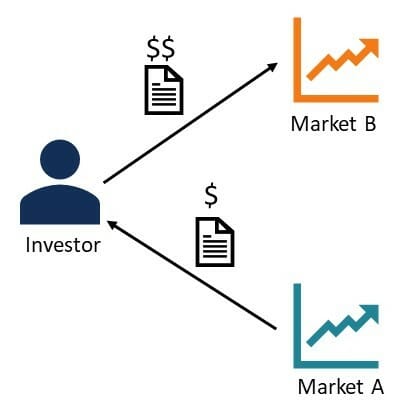Arbitrage - A Common Trading Strategy
The strategy of taking advantage of the price differences of an asset
Over 1.8 million professionals use CFI to learn accounting, financial analysis, modeling and more. Start with a free account to explore 20+ always-free courses and hundreds of finance templates and cheat sheets.
What is Arbitrage?
Arbitrage is the strategy of taking advantage of price differences in different markets for the same asset. For it to take place, there must be a situation of at least two equivalent assets with differing prices. In essence, arbitrage is a situation where a trader can profit from the imbalance of asset prices in different markets. The simplest form of arbitrage is purchasing an asset in a market where the price is lower and simultaneously selling the asset in a market where the asset’s price is higher. Arbitrage is a widely used trading strategy, and probably one of the oldest trading strategies to exist. Traders who engage in the strategy are called arbitrageurs.
Arbitrage is a widely used trading strategy, and probably one of the oldest trading strategies to exist. Traders who engage in the strategy are called arbitrageurs.
The concept is closely related to the market efficiency theory. The theory states that for markets to be perfectly efficient, there must be no arbitrage opportunities – all equivalent assets should converge to the same price. The convergence of the prices in different markets measures market efficiency.
Both the Capital Asset Pricing Model (CAPM) and the Arbitrage Pricing Theory explain that arbitrage opportunities occur due to the mispricing of assets. If the opportunities are fully explored, the prices of equivalent assets should converge.
Arbitrage Examples
A Simple Example
Warren Buffett at 6 years old saw that he could profit from arbitrage. He would purchase a 6-pack of Coca-Cola for 25¢ and sell each bottle for 5¢ in his neighborhood, profiting 5¢ per pack. Young Warren Buffett saw that he could profit from the difference in the price of a six-pack versus what people were willing to pay for a single bottle.
A More Complex Example
A very common example of arbitrage opportunities is with cross-border listed companies. Let’s say an individual owns stock in Company ABC, listed on Canada’s TSX, that is trading at $10.00 CAD. At the same time, the ABC stock listed on the NYSE trades at $8.00 USD. The current CAD/USD exchange rate is 1.10. A trader could purchase shares on the NYSE for $8.00 USD and sell shares on the TSX for $10.00 CAD. This would give him a profit of $1.09 USD per share.
Necessary Trading Conditions
Arbitrage may occur if the following conditions are met:
- Asset price imbalance: This is the primary condition of arbitrage. The price imbalance can take various forms:
- In different markets, the same asset is traded at different prices.
- Assets with similar cash flows are traded at different prices.
- An asset with a known future price currently traded at a price different from the expected value of the future cash flows.
- Simultaneous trade execution: The purchase and sale of identical or equivalent assets should be executed simultaneously to capture the price differences. If the transactions are not executed simultaneously, the trade will be exposed to significant risks.
Trading with Arbitrage
Even though this a simple strategy very few – if any – investment funds rely solely on such a strategy. This fact can be explained by the difficulties associated with exploiting the commonly short-lived situation. With the rise of electronic trading, which can execute trade orders within a fraction of a second, mispriced asset differences occur for a minuscule amount of time. The improved trading speed has, in this sense, improved the efficiency of markets.
In addition, equal assets with different prices generally show a small difference in price, smaller than the transaction costs of an arbitrage trade would be. This effectively negates the arbitrage opportunity.
Arbitrage is generally exploited by large financial institutions because it requires significant resources to identify the opportunities and execute the trades. They are often performed with the use of complex financial instruments, such as derivative contracts and other forms of synthetic instruments, to find equivalent assets. Derivative trading frequently involves margin trading and a large amount of cash required to execute the trades.
Paintings are alternative assets with a subjective value and tend to give rise to arbitrage opportunities. For example, one painter’s paintings might sell cheaply in one country but in another culture, where their painting style is more appreciated, sell for substantially more. An art dealer could arbitrage by buying the paintings where they are cheaper and selling them in the country where they bring a higher price.
































